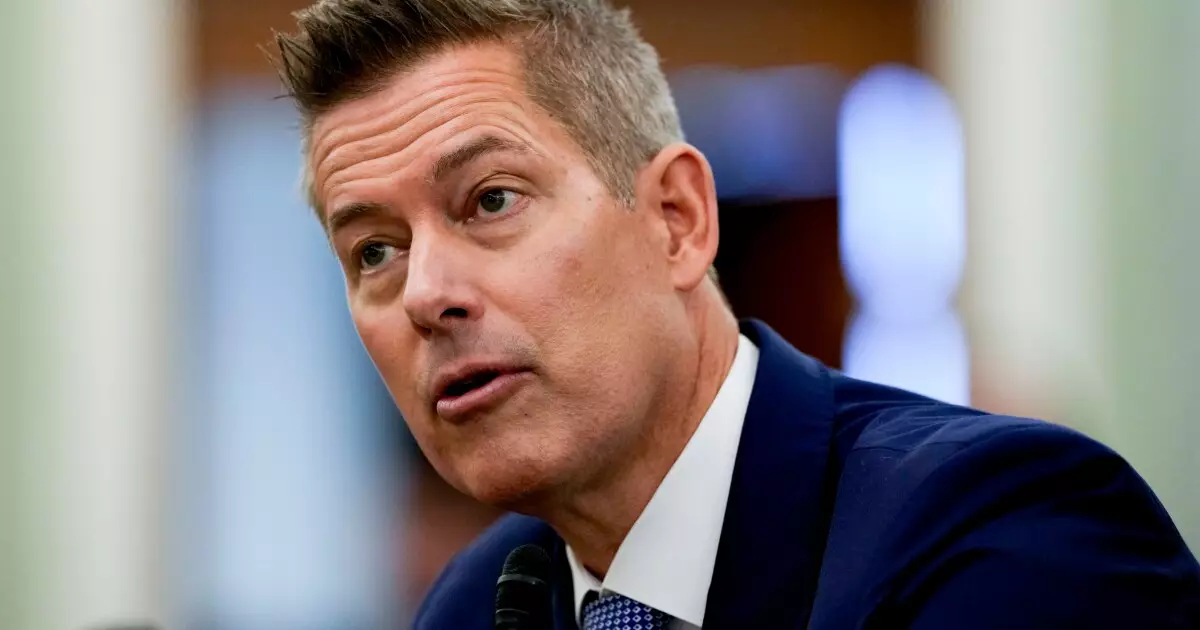The transportation sector has long been a critical element of infrastructure development and economic growth in the United States. However, recent changes to federal funding priorities under the Trump administration suggest a significant pivot in how transportation projects will be evaluated, funded, and rolled out. With a recent memo issued by the U.S. Department of Transportation, there are notable implications that merit an informed examination.
At the helm of these changes is the Department of Transportation (DOT), which has established new criteria that dictate how federal funds are allocated. Transportation Secretary Sean Duffy’s directive aims to channel resources towards projects located in regions marked by high birth and marriage rates while simultaneously enforcing compliance with federal immigration laws. Such stipulations prioritize demographic trends over purely functional considerations of transportation needs in certain areas, complicating the traditional metrics used for assessing the feasibility of funding requests.
This approach raises questions about the pertinent factors that should determine transportation funding. While family dynamics can reflect social stability, the emphasis on demographic indicators becomes contentious when weighed against infrastructure necessities that do not align with these criteria. Ultimately, this could lead to the neglect of areas that may require immediate transport improvements, creating the potential for disparity in federal investment.
With the stipulations focusing on enhancing funding for projects within federal opportunity zones, the new strategy appears to attempt to align transportation efforts with broader economic development goals. The memo highlights a clear preference for user-fee models, presumably to reinforce fiscal sustainability in transportation initiatives. Such methodologies may favor projects that generate income directly linked to usage fees, such as toll roads or transit services, steering public investment toward what the administration perceives as more ‘sound economic choices’.
Yet, reliance on user-fee models can also be problematic, as it may inadvertently disadvantage lower-income populations who may lack the means to pay these fees. This creates a tension between promoting economic efficiency and ensuring equitable access to transportation services—one that the new guidelines must navigate carefully.
Reviewing Existing Agreements
According to Duffy’s memo, there is a directive for an overhaul of existing agreements regarding grants, loans, and contracts managed by the DOT. The memo suggests that officials at the department have the authority to revise these agreements unilaterally, although Joung Lee from the American Association of State Highway and Transportation Officials has indicated that these revisions primarily affect discretionary grants. This unilateral approach will likely spark concerns regarding transparency and stakeholder engagement.
The complexities associated with implementing such changes underscore a need for clarity concerning the ramifications for ongoing projects. Stakeholders in the transportation sector, including state departments of transportation, will need to adapt to these modifications while advocating for a balanced approach that reflects both innovative and established practices.
Duffy’s comments regarding “climate change activism” and partisan goals signal a decisive break from certain policies adopted under the previous administration. Acknowledging a commitment to reducing red tape, the emphasis now seems to lean toward increasing efficiencies and facilitating faster project rollouts. Duffy’s assertion that states should have greater autonomy is an acknowledgment of the distinct challenges local governments face.
Accelerating the pace of transportation project approvals is a noble pursuit; however, there is an inherent risk of potentially compromising environmental reviews and community input agendas in this rush to “build faster.” Any significant restructuring designed to streamline operations must ensure that increased efficiency does not come at the expense of diligent oversight, which is crucial in maintaining quality and safety standards.
The future of U.S. transportation funding is poised on the brink of a fundamental realignment under the Trump administration’s new directives. While there is a clear intention to prioritize economic pragmatism and regional demographics, it is essential that the policymaking framework actively incorporates the voices of affected communities and transportation experts.
The conversation surrounding transportation infrastructure should encompass transparency, accountability, and collaboration between federal and state partners. As Duffy suggests a shift toward greater independence for states, it becomes paramount to establish dialogue that builds mutual understanding and respects the unique needs of various communities.
The recent changes instituted by the Trump administration could usher in a new era of transportation funding that carefully balances fiscal responsibility with social equity. The challenge lies in navigating these new waters while ensuring that every American community benefits from equitable access to resilient and well-funded transportation systems.

